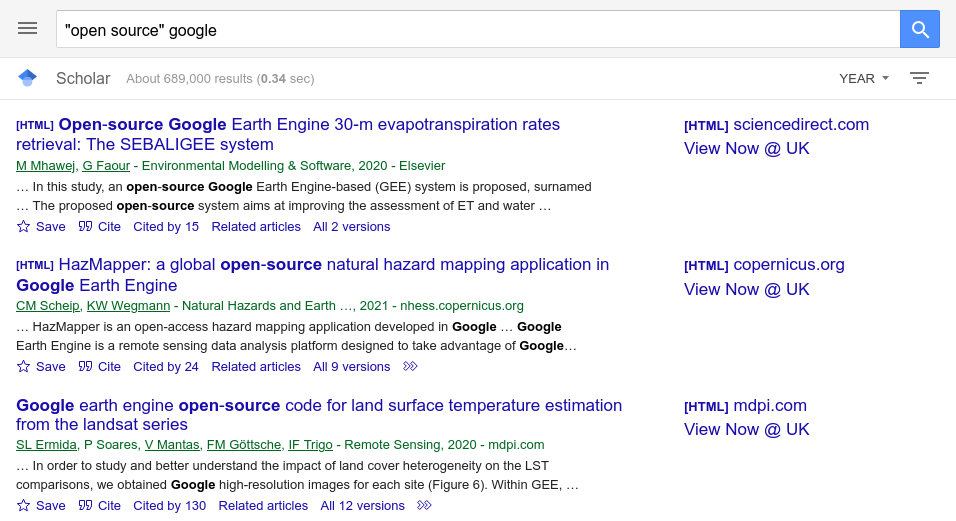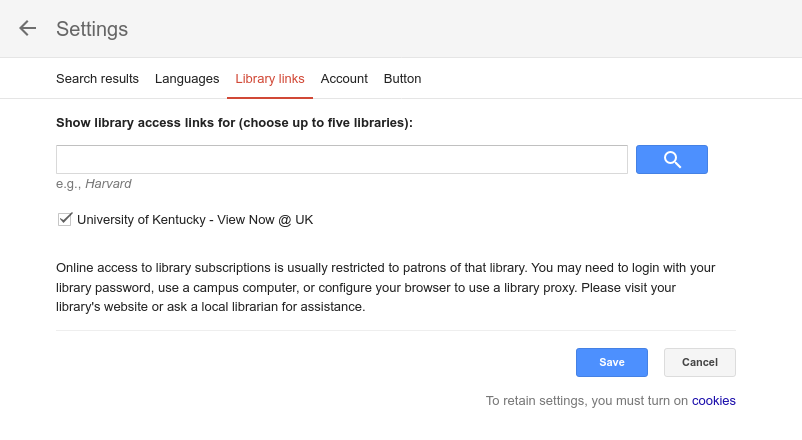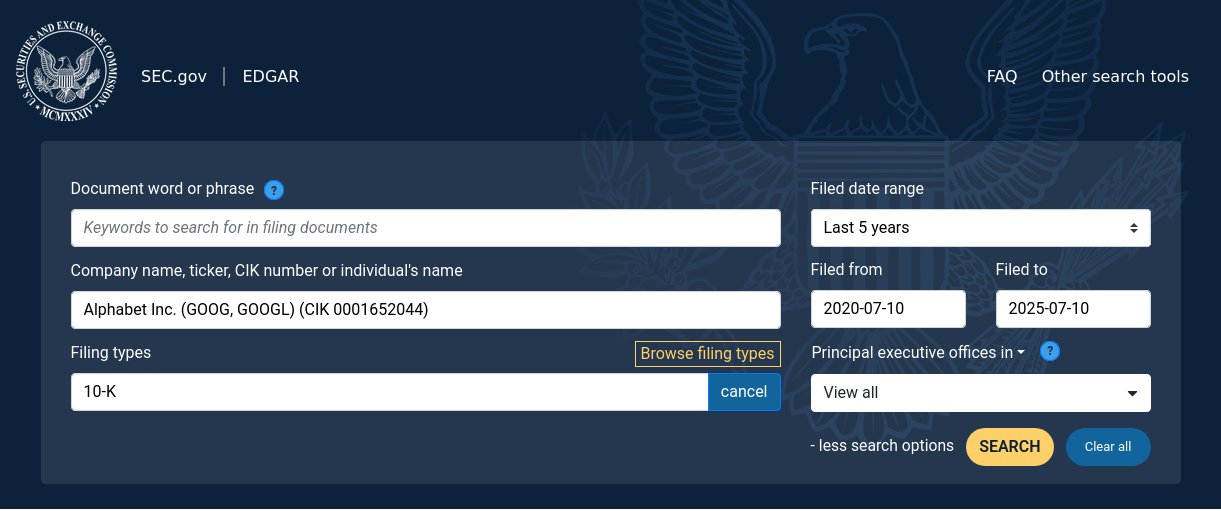Web Sources: Part 1
Many of us spend most of our time on the web visiting a handful of sites. These sites vary by country, but in the U.S., we spend much of our time on Google, YouTube, Facebook, Instagram, Netflix, TikTok, Wikipedia, and a few others.
That's fine, of course, but the web is composed of billions of web pages, and many are worth knowing and exploring.
We also spend most of our time on a limited number of domains.
This includes sites ending with .com, .org, .edu, etc.
But remember that you've already learned how to search the web, and if you're interested in learning more about what's out there,
I encourage you to add a site: operator to your web queries if you want to mix things up every once in a while.
There over 1,400 top level domains that we can use with the site: operator, and it can be fun to add random ones to your searches:
asthma site:health.gov
Or:
(linux or windows or macos) site:computer
That said, in this and the next section I want to cover a few specific sites that are great information resources.
Google Scholar
Google Scholar isn't a library database but more like an academic search engine that's freely available on the web. Its weakness is that it doesn't provide the kind of search operators that either Factiva or Web of Science have, and so search can be less precise. However, its strength is that it indexes a lot of academic and legal content.
Searching Google Scholar is a lot like searching Google, which we've already covered.
For example, since Google Scholar is more like a search engine, like Google and related search products, the AND operator does not need to be specified.
Thus the following search is translated as: "open source" AND google.

You can see here we get a lot of results. Maybe even too much. If we want to limit our results, we have to use other tricks. The most common one is simply to add more specific keywords to our query. E.g., if I add "android" to the query, that reduces the results.
"open source" google android
There is an advanced search option.
However, since Google Scholar is indexing full text sources and not structured bibliographic records,
this means that it can't offer the kind of advanced search we've seen in database searches.
It is pretty useful, though, and we can focus on some fields, like titles.
For example, Figure 2 shows an advanced title search for the terms google and "open source" but it excludes the term android in the title,
and we can limit results published from 2018 to today.
You can see that this substantially narrows our results, thereby increasing the precision of our query.
As of July 9, 2025, Google Scholar returns only 93 hits for this search.

Other than that, one of the nice things about Google Scholar is that it's also a citation database. You can see the Cited by N link just below each result. If something has been cited, click on that to follow citations.
The reason Google Scholar returns so many more results is because it casts a bigger net than something like Web of Science does, which purposefully casts a smaller net, which it does for quality control. Because of that, I find Google Scholar can return many non-relevant works, but it makes it nice for browsing or discovery. Web of Science shines for more rigorous and methodical literature searches.
The observant among you may have noticed that in Figure 1, there is a View Now @ UK link. The reason Google Scholar provides that link is that I've configured it to connect with UK's InfoKat. This is something you have to set up, but it's pretty simple to do. Just click on settings, and then go to Library Links, and then search for the University of Kentucky. Check the box next to it. Be sure that you're signed into your Google account if you want to save this as a preference. After that, you should see the View Now option when something is available via UK Libraries.

You might find the following three other web-based bibliographic tools useful:
- Crossref https://search.crossref.org/
- Crossref will search all works that have a DOI, or [digital object identifier][doi]. As such, it contains many millions of bibliographic records.
- Semantic Scholar https://www.semanticscholar.org/
- Semantic Scholar is an AI powered bibliographic search engine that also functions as a citation database. It can provide summaries of articles and other works, lists of citations, citing authors, co-authors of authors, and links to related papers.
- Consensus https://consensus.app/search/
- Consensus build on Semantic Scholar. Instead of a functioning like a traditional search engine, you can ask it questions on research topics. It provides examples on its main search page. It provide citation information and details about studies.
Internet Archive
The Internet Archive is a "non-profit library of millions of free books, movies, software, music, websites, and more."
For example, you might be interested in playing some old PC games that your parents played when they were younger:
The Internet Archive provides access to the Wayback Machine. The Wayback Machine is an archive of the web from its early days to the present. It's fun, for example, to use it to see what the web looked like years ago. For example, this is likely UK's first web page and was captured by the Wayback Machine in 1997:
But the Wayback Machine is also useful to retrieve web pages and sites that have been shutdown or removed. That is, if you have a broken URL, you can enter the URL in the Wayback Machine and see if the original page was archived.
The Internet Archive is also a library, and offers collections on a vast range of topics and links to all sorts of media, including text, audio, video, and images.
You can view its main collections on the home page of the Internet Archive. You can also search. I've found, for instance, scanned yearbooks from my college.
The Internet Archive oversees The Open Library. You can use the Open Library to check out and read books for free, just like you would use a physical library.
DPLA
The DPLA (Digital Public Library of America) is a shared repository of content that brings together digital and digitized sources from libraries, museums, and archives across the U.S.
The DPLA is great for browsing, but they also provide guides for those interested in using the DPLA for Education, Family Research, Lifelong Learning, and Scholarly Research.
Like a library, museum, or archive, the DPLA offers:
- featured exhibitions
- primary source sets
- the ability to browse by topic
- the ability to browser by contributor
- and more.
Library of Congress
The Library of Congress provides a list of bibliographies, research guides, and finding aids on a vast range of topics. Many of the links in this list go directly to digital libraries that focus on specific topics or areas. For example, check out this fun collection of resources on dance manuals published from 1490 through 1920.
The Library of Congress also provides access to digital collections on subjects ranging from American History, War & Military, Art & Architecture, Sports & Recreation, Science & Technology, and more.
Various Government Resources
U.S. Census
The United States Census Bureau is the best way to get various demographic and some economic information about the U.S. You can also get Quick Facts about your local area. You can, for example, also compare demographics by location. Here's a population comparison between Lexington, KY and Cincinnati, OH.
NASA
NASA's website offers tons of sources on all of its major projects. From its homepage, you can download apps, audio & ringtones, e-books, and podcasts. The site also provides information on various missions, like the recent James Webb Space Telescope as well as exciting image and video galleries.
U.S. Bureau of Labor Statistics
The U.S. Bureau of Labor Statistics (BLS) is the go to site for job and economic information. The site takes some exploration to learn all that it offers, but I can provide two examples.
The Data Tools dropbox box provides employment change data for various sectors of the U.S. On the Employment by industry, monthly changes page, we see how various industries have changed in employment in the last month.
The CPI Inflation Calculator shows how the value of the dollar has changed over time due to inflation. For example, I can see that $10.00 in January of 2000 has the same buying power as $19.04 in May of 2025.
This calculator is useful in a lot of ways.
For example, the resident-based tuition to attend UK for the 2002-2003 academic year was $1,740 per semester, and
for the 2025-2026 academic year, it is $6,953.50.
The CPI calculator shows that if tuition increased at the same rate as inflation,
then today's tuition cost should only be $3,158.38 per semester (from January 2002 to May 2025).
That means the extra $3,795.12 (6953.50 - 3158.38) spent on tuition today increased due to other (complicated) factors.
You can also see how home prices have changed. The house I rent was purchased for $101,650 during the summer of 2001. Zillow estimates that it would sell for $317,800 (Spring 2024). But inflation only accounts for a price tag of $177,217. Thus the extra $140,583 or so is factor of other market forces.
Property information like this is generally public information. Fayette County, the seat of Lexington, KY, provides this information at https://fayettepva.com/. You can check your local municipality's website for comparable information. In fact, many city and county websites make available lots of data (e.g., see https://www.lexingtonky.gov/.
EDGAR: U.S. Securities and Exchange Commission
EDGAR is a go to site if you're thinking about investing in a public company. Of particular interest are the 10-K and 10-Q reports. The 10-K report is an annual report that public companies are required to submit to the SEC. The 10-Q report is the quarterly version.
The 10-K report:
Provides audited annual financial statements, a discussion of material risk factors for the company and its business, and a management's discussion and analysis of the company's results of operations for the prior fiscal year (Form Type Description)
The 10-Q report is unaudited.
The EDGAR search page is pretty straightforward and offers autocomplete as you type. My search query in Figure 4 is a search for Google's (specifically, Alphabet's) last 10-K report, which was filed on February 2, 2025.

If you read the 2025 report, you can see that Google primarily earns income based on advertising (75% of total revenue), customer subscriptions, platforms (e.g., Google Play), devices (e.g., Pixel), and Google Cloud usage. Since 2015, it's worked on integrating AI technologies in its core services. It has 183,323 employees (as of December 2024). There is much more in this report and similar reports from other public companies.
MedlinePlus
Lastly, I would like to refer you to MedlinePlus, which is part of the National Library of Medicine. The purpose of this site is to serve as a health and medical reference resource for the general public. Although no online site can take the place of professional medical help, MedlinePlus can be an important resource for becoming more informed about various health topics.
Instead of googling that next symptom or condition, I highly encourage you to visit MedlinePlus first. The site also covers wellness topics and provides recipes for a wide range of meals.
Conclusion
Although it's important to know how to search the web well, it's also handy to know about specific go to resources on the web that can provide more in-depth information or that provide more coverage than most Google etc searches can yield. In order to highlight this, in this section I covered a few, I think, super interesting and helpful sites that include the:
- Google Scholar
- Crossref
- Semantic Scholar
- Consensus
- Internet Archive
- Open Library
- DPLA
- Library of Congress
- U.S. Census
- NASA
- U.S. Bureau of Labor Statistics
- EDGAR (SEC)
- MedlinePlus
Be sure to explore these sites, as well as others you find, because many of these just don't come up in your everyday kind of search.